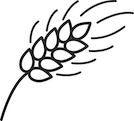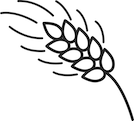Behavioral Health Services for American Indians and Alaska Natives- Module 1 (5 credit hours)
Program Summary: This course offers culturally competent guidance for treatment providers working with American Indian and Alaska Native individuals. The course examines American Indian and Alaska Native cultures and offers practice-based approaches for behavioral health services. This course is divided into two modules. Module 1 covers the Executive Summary and Part 1 Chapter 1. The course explores historical factors, cultural perspectives, social challenges, and behavioral health issues.
“Never look for a psychological explanation unless every effort to find a cultural one has been exhausted.” – Margaret Mead
This course is recommended for social workers and counselors and is appropriate for beginning and intermediate levels of practice.
 Open the Executive Summary here.
Open the Executive Summary here.
Publisher: The Substance Abuse and Mental Health Services Administration
Course Objectives: To enhance professional practice, values, skills, and knowledge by identifying key issues related to behavioral health services for American Indians and Alaska Natives.
Learning Objectives: As related to American Indian and Alaska Natives– Identify the cycle of historical trauma. Compare myths and facts. Describe economic and social challenges. Describe the Cycle of Assimilation and Reconnection. Identify traditional values. Define the term ‘microaggression.’ Describe concepts of health and illness.
Review our pre-reading study guide.
G.M. Rydberg-Cox, MSW, LSCSW is the Continuing Education Director at Free State Social Work and responsible for the development of this course. She received her Masters of Social Work in 1996 from the Jane Addams School of Social Work at the University of Illinois-Chicago and she has over 20 years of experience. She has lived and worked as a social worker in Chicago, Boston, and Kansas City. She has practiced for many years in the area of hospital/medical social work. The reading materials for this course were developed by another organization.




